No first hand experience with bunker, all my training/real time experience was w/ gas, diesel & JP-5 (all of which ignite & burn exceptionally well).It's probably bunker fuel, not easily ignited. @GreatwhiteNorth ?
Veterans...Get the hell in here now!
- Thread starter 6ohMax
- Start date
raratt
Well-Known Member
The SR used JP-7, you can't light it with a match.No first hand experience with bunker, all my training/real time experience was w/ gas, diesel & JP-5 (all of which ignite & burn exceptionally well).
cannabineer
Ursus marijanus
And you can run it through a heat exchanger at 600 without it throwing varnishThe SR used JP-7, you can't light it with a match.
doublejj
Well-Known Member
Black disabled veteran sentenced to spend 60 months in prison for medical marijuana

Black disabled veteran Sean Worsley and his wife, Eboni, were arrested in Pickens County in August 2016. The Worsleys had visited Eboni’s family in Mississippi and were on their way to North Carolina to visit his family. They however made the life-altering mistake of stopping to purchase gas in Alabama on their way to NC.
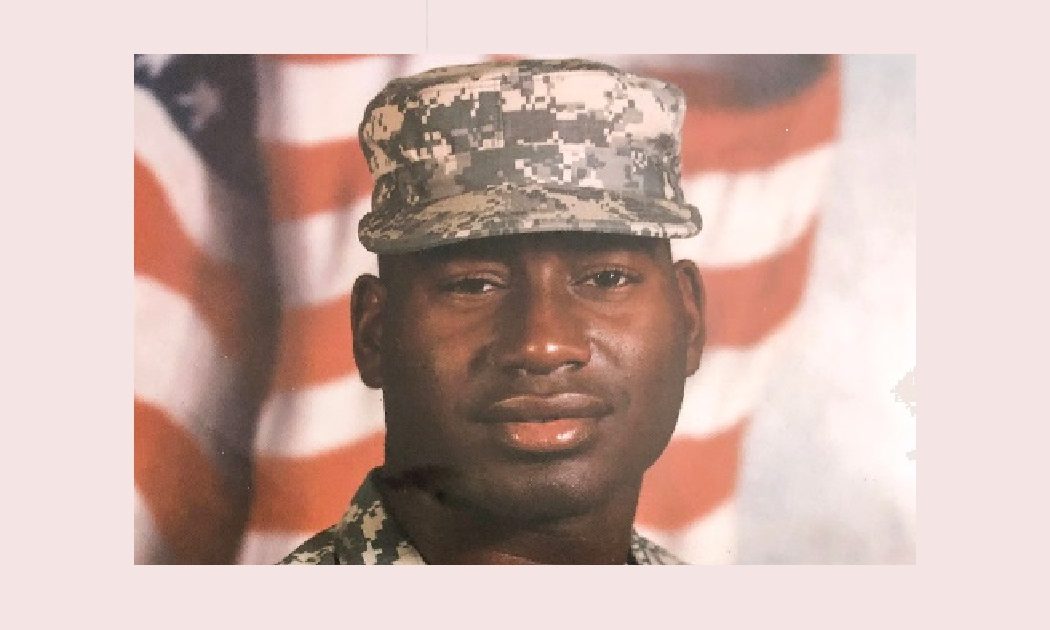
 www.alreporter.com
www.alreporter.com

Black disabled veteran Sean Worsley and his wife, Eboni, were arrested in Pickens County in August 2016. The Worsleys had visited Eboni’s family in Mississippi and were on their way to North Carolina to visit his family. They however made the life-altering mistake of stopping to purchase gas in Alabama on their way to NC.

Black disabled veteran sentenced to spend 60 months in prison for medical marijuana
A 2016 arrest for marijuana that has turned into a 60-month sentence in an Alabama penitentiary for a disabled veteran from Arizona is drawing national attention.
 www.alreporter.com
www.alreporter.com
BarnBuster
Virtually Unknown Member
On July 14, 1862, President Lincoln ended the spirit portion of the ration when he approved, "An act making appropriations for the Naval Service for the Year ending thirtieth of June, eighteen hundred and sixty-three, and for other Purposes." The new law specifically stated, "SEC. 4. And be it further enacted, That from and after the first day of September, eighteen hundred and sixty-two, the spirit ration in the navy of the United States shall forever cease, and thereafter no distilled spirituous liquors shall be admitted on board of vessels-of-war except as medical stores, and upon the order, and under the control of the medical officers of such vessels, and to be used only for medical purposes. From and after the said first day of September next there shall be allowed and paid to each person in the navy now entitled to the spirit ration five cents per day in commutation and lieu thereof, which shall be in addition to their present pay."
Moldy
Well-Known Member
Thanks for your service Sean. I hope someday you and your family receive reparations for this heinous crime committed against you.Black disabled veteran sentenced to spend 60 months in prison for medical marijuana
View attachment 4623657
Black disabled veteran Sean Worsley and his wife, Eboni, were arrested in Pickens County in August 2016. The Worsleys had visited Eboni’s family in Mississippi and were on their way to North Carolina to visit his family. They however made the life-altering mistake of stopping to purchase gas in Alabama on their way to NC.

Black disabled veteran sentenced to spend 60 months in prison for medical marijuana
A 2016 arrest for marijuana that has turned into a 60-month sentence in an Alabama penitentiary for a disabled veteran from Arizona is drawing national attention.www.alreporter.com
Not sure how that works, I can remember many "Channel Fever" nights (the night before arriving in home port after a long deployment) the crew was given a beer "ration", usually 3 or 4 max (but the best part was having a buddy or two that didn't drink).On July 14, 1862, President Lincoln ended the spirit portion of the ration when he approved, "An act making appropriations for the Naval Service for the Year ending thirtieth of June, eighteen hundred and sixty-three, and for other Purposes." The new law specifically stated, "SEC. 4. And be it further enacted, That from and after the first day of September, eighteen hundred and sixty-two, the spirit ration in the navy of the United States shall forever cease, and thereafter no distilled spirituous liquors shall be admitted on board of vessels-of-war except as medical stores, and upon the order, and under the control of the medical officers of such vessels, and to be used only for medical purposes. From and after the said first day of September next there shall be allowed and paid to each person in the navy now entitled to the spirit ration five cents per day in commutation and lieu thereof, which shall be in addition to their present pay."
I'd like to buy these guys a beer!
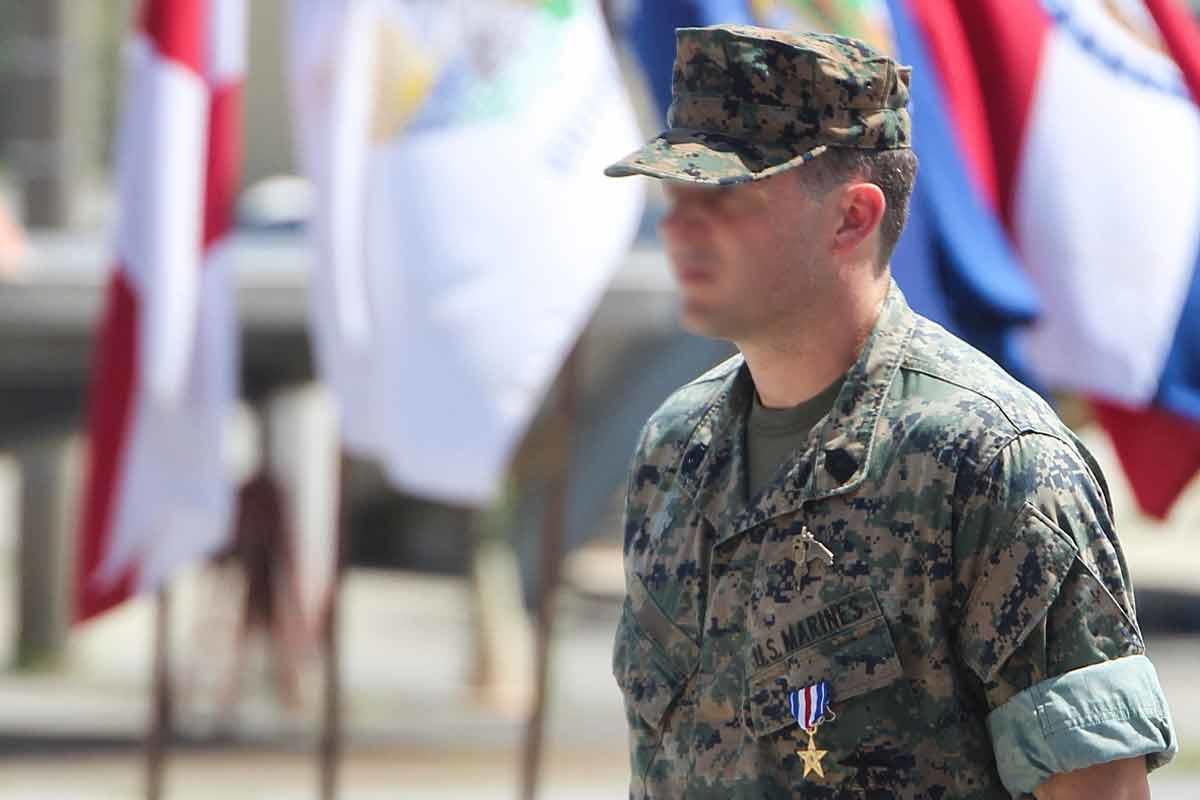
 news.yahoo.com
news.yahoo.com
8 Marines Earn Valor Awards for Daring Afghanistan Helo Raid with Hours of Close Combat
Eight Marine Raiders recognized for their actions during the April 10, 2019, mission in southern Afghanistan.
cannabineer
Ursus marijanus
Right around the time that shipbuilding transitioned from timber to irony, as captured in the term “a dry Navy”.On July 14, 1862, President Lincoln ended the spirit portion of the ration when he approved, "An act making appropriations for the Naval Service for the Year ending thirtieth of June, eighteen hundred and sixty-three, and for other Purposes." The new law specifically stated, "SEC. 4. And be it further enacted, That from and after the first day of September, eighteen hundred and sixty-two, the spirit ration in the navy of the United States shall forever cease, and thereafter no distilled spirituous liquors shall be admitted on board of vessels-of-war except as medical stores, and upon the order, and under the control of the medical officers of such vessels, and to be used only for medical purposes. From and after the said first day of September next there shall be allowed and paid to each person in the navy now entitled to the spirit ration five cents per day in commutation and lieu thereof, which shall be in addition to their present pay."
BarnBuster
Virtually Unknown Member
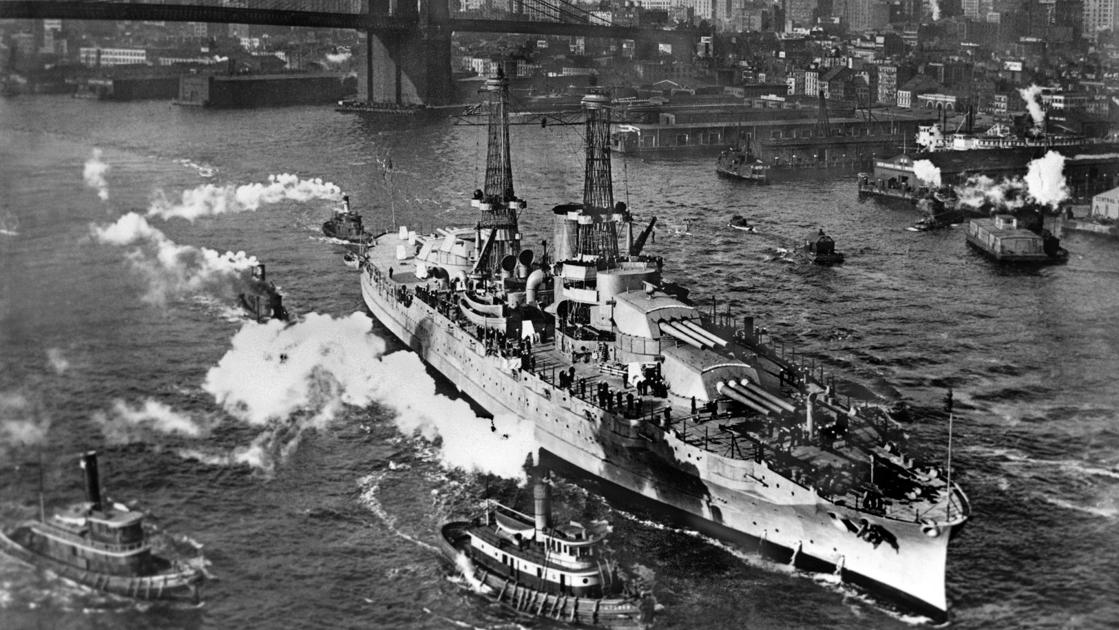
Rarely seen photos of the USS Arizona, sunk Dec. 7, 1941, in Pearl Harbor
The USS Arizona was a Pennsylvania-class battleship commissioned in the United State Navy in 1916. She went through an extensive modernization in 1929, with new deck armor, boilers, turbines, guns
 tucson.com
tucson.com
Edit: I was reading the book below which led me to the above pictures. Ed Raymer was the Senior Petty Officer in charge of the salvage dive team that were the first ones to enter the Arizona in early January 1942. His team was also instrumental in raising the West Virginia, Nevada and California. bb
Amazon.com: Descent into Darkness: Pearl Harbor, 1941 - A Navy Diver's Memoir: 9781591147244: Edward C. Raymer: Books
Amazon.com: Descent into Darkness: Pearl Harbor, 1941 - A Navy Diver's Memoir: 9781591147244: Edward C. Raymer: Books
www.amazon.com
Last edited:
BarnBuster
Virtually Unknown Member
Today in Military History:
On July 30, 1945, the USS Indianapolis is torpedoed by a Japanese submarine and sinks within minutes in shark-infested waters. Only 316 of the 1,196 men on board survived. However, the Indianapolis had already completed its major mission: the delivery of key components of the atomic bomb that would be dropped a week later at Hiroshima to Tinian Island in the South Pacific.
The Indianapolis made its delivery to Tinian Island on July 26, 1945. The mission was top secret and the ship’s crew was unaware of its cargo. After leaving Tinian, the Indianapolis sailed to the U.S. military’s Pacific headquarters at Guam and was given orders to meet the battleship USS Idaho at Leyte Gulf in the Philippines to prepare for the invasion of Japan.
Shortly after midnight on July 30, halfway between Guam and Leyte Gulf, a Japanese sub blasted the Indianapolis, sparking an explosion that split the ship and caused it to sink in approximately 12 minutes, with about 300 men trapped inside. Another 900 went into the water, where many died from drowning, shark attacks, dehydration or injuries from the explosion. Help did not arrive until four days later, on August 2, when an anti-submarine plane on routine patrol happened upon the men and radioed for assistance.
On August 6, 1945, the United States dropped an atomic bomb on Hiroshima, Japan, inflicting nearly 130,000 casualties and destroying more than 60 percent of the city. On August 9, a second atomic bomb was dropped on Nagasaki, where casualties were estimated at over 66,000. Meanwhile, the U.S. government kept quiet about the Indianapolis tragedy until August 15 in order to guarantee that the news would be overshadowed by President Harry Truman’s announcement that Japan had surrendered.
In the aftermath of the events involving the Indianapolis, the ship’s commander, Captain Charles McVay, was court-martialed in November 1945 for failing to sail a zigzag course that would have helped the ship to evade enemy submarines in the area. McVay, the only Navy captain court-martialed for losing a ship during the war, committed suicide in 1968. Many of his surviving crewmen believed the military had made him a scapegoat. In 2000, 55 years after the Indianapolis went down, Congress cleared McVay’s name.
Fatal Voyage: The Sinking of the U.S.S. Indianapolis by Dan Kurzman
In Harm's Way: The Sinking of the U.S.S. Indianapolis and the Extraordinary Story of Its Survivors by Doug Stanton
Indianapolis: The True Story of the Worst Sea Disaster in U.S. Naval History and the Fifty-Year Fight to Exonerate an Innocent Man Lynn Vincent
Abandon Ship!: The Saga of the U.S.S. Indianapolis, the Navy's Greatest Sea Disaster Hardcover by Richard F. Newcomb, Peter Maas
On July 30, 1945, the USS Indianapolis is torpedoed by a Japanese submarine and sinks within minutes in shark-infested waters. Only 316 of the 1,196 men on board survived. However, the Indianapolis had already completed its major mission: the delivery of key components of the atomic bomb that would be dropped a week later at Hiroshima to Tinian Island in the South Pacific.
The Indianapolis made its delivery to Tinian Island on July 26, 1945. The mission was top secret and the ship’s crew was unaware of its cargo. After leaving Tinian, the Indianapolis sailed to the U.S. military’s Pacific headquarters at Guam and was given orders to meet the battleship USS Idaho at Leyte Gulf in the Philippines to prepare for the invasion of Japan.
Shortly after midnight on July 30, halfway between Guam and Leyte Gulf, a Japanese sub blasted the Indianapolis, sparking an explosion that split the ship and caused it to sink in approximately 12 minutes, with about 300 men trapped inside. Another 900 went into the water, where many died from drowning, shark attacks, dehydration or injuries from the explosion. Help did not arrive until four days later, on August 2, when an anti-submarine plane on routine patrol happened upon the men and radioed for assistance.
On August 6, 1945, the United States dropped an atomic bomb on Hiroshima, Japan, inflicting nearly 130,000 casualties and destroying more than 60 percent of the city. On August 9, a second atomic bomb was dropped on Nagasaki, where casualties were estimated at over 66,000. Meanwhile, the U.S. government kept quiet about the Indianapolis tragedy until August 15 in order to guarantee that the news would be overshadowed by President Harry Truman’s announcement that Japan had surrendered.
In the aftermath of the events involving the Indianapolis, the ship’s commander, Captain Charles McVay, was court-martialed in November 1945 for failing to sail a zigzag course that would have helped the ship to evade enemy submarines in the area. McVay, the only Navy captain court-martialed for losing a ship during the war, committed suicide in 1968. Many of his surviving crewmen believed the military had made him a scapegoat. In 2000, 55 years after the Indianapolis went down, Congress cleared McVay’s name.
Fatal Voyage: The Sinking of the U.S.S. Indianapolis by Dan Kurzman
In Harm's Way: The Sinking of the U.S.S. Indianapolis and the Extraordinary Story of Its Survivors by Doug Stanton
Indianapolis: The True Story of the Worst Sea Disaster in U.S. Naval History and the Fifty-Year Fight to Exonerate an Innocent Man Lynn Vincent
Abandon Ship!: The Saga of the U.S.S. Indianapolis, the Navy's Greatest Sea Disaster Hardcover by Richard F. Newcomb, Peter Maas
Gorillabilly
Well-Known Member
Heeeeeeeeyyyyyy.... muddafuggas!
Army 6 years, navy 13 years.
Whats poppin
Army 6 years, navy 13 years.
Whats poppin
BarnBuster
Virtually Unknown Member
Today in Military History:
On July 31, 1917, the Allies launch a renewed assault on German lines in the Flanders region of Belgium, in the much-contested region near Ypres, during World War I. The attack begins more than three months of brutal fighting, known as the Third Battle of Ypres.
While the first and second battles at Ypres were attacks by the Germans against the Allied-controlled salient around Ypres—which crucially blocked any German advance to the English Channel—the third was spearheaded by the British commander in chief, Sir Douglas Haig. After the resounding failure of the Nivelle Offensive–named for its mastermind, the French commander Robert Nivelle–the previous May, followed by widespread mutinies within the French army, Haig insisted that the British should press ahead with another major offensive that summer. The aggressive and meticulously planned offensive, ostensibly aimed at destroying German submarine bases located on the north coast of Belgium, was in fact driven by Haig’s (mistaken) belief that the German army was on the verge of collapse, and would be broken completely by a major Allied victory.
After an opening barrage of some 3,000 guns and some 4.5 million shells (It is estimated,that as much as 30% of WWI ordnance failed to explode. Areas of France are still off limits due to UXO, ERW. See "Zone Rouge" bb) Haig ordered nine British divisions, led by Sir Hubert Gough’s 5th Army, to advance on the German lines near the Belgian village of Passchendaele on July 31; they were joined by six French divisions. In the first two days of the attacks, while suffering heavy casualties, the Allies made significant advances—in some sectors pushing the Germans back more than a mile and taking more than 5,000 German prisoners—if not as significant as Haig had envisioned. The offensive was renewed in mid-August, though heavy rains and thickening mud severely hampered the effectiveness of Allied infantry and artillery and prevented substantial gains over the majority of the summer and early fall.
Dissatisfied with his army’s gains by the end of August, Haig had replaced Gough with Herbert Plumer at the head of the attack; after several small gains in September, the British were able to establish control over the ridge of land east of Ypres. Encouraged, Haig pushed Plumer to continue the attacks towards the Passchendaele ridge, some 10 kilometers from Ypres.
Thus the Third Battle of Ypres–also known as Passchendaele, for the village, and the ridge surrounding it, that saw the heaviest fighting–continued into its third month, as the Allied attackers reached near-exhaustion, with few notable gains, and the Germans reinforced their positions in the region with reserve troops released from the Eastern Front, where Russia’s army was foundering amid internal turmoil. Unwilling to give up, Haig ordered a final three attacks on Passchendaele in late October. The eventual capture of the village, by Canadian and British troops, on November 6, 1917, allowed Haig to finally call off the offensive, claiming victory, despite some 310,000 British casualties, as opposed to 260,000 on the German side, and a failure to create any substantial breakthrough, or change of momentum, on the Western Front. Given its outcome, the Third Battle of Ypres remains one of the most costly and controversial offensives of World War I, representing–at least for the British–the epitome of the wasteful and futile nature of trench warfare. In 1918 all the ground that had been gained there by the Allies was evacuated in the face of a looming German assault. Passchendaele would be remembered as a symbol of the worst horrors of the First World War, the sheer futility of much of the fighting, and the reckless disregard by some of the war’s senior leaders for the lives of the men under their command.
Some 61 Victoria Crosses, the British Empire’s highest decoration for military valour, were awarded after the fighting. More Victoria Crosses—14 in total—were awarded for actions on the opening day of the Battle of Passchendaele than for actions on any other single day of combat in World War I.
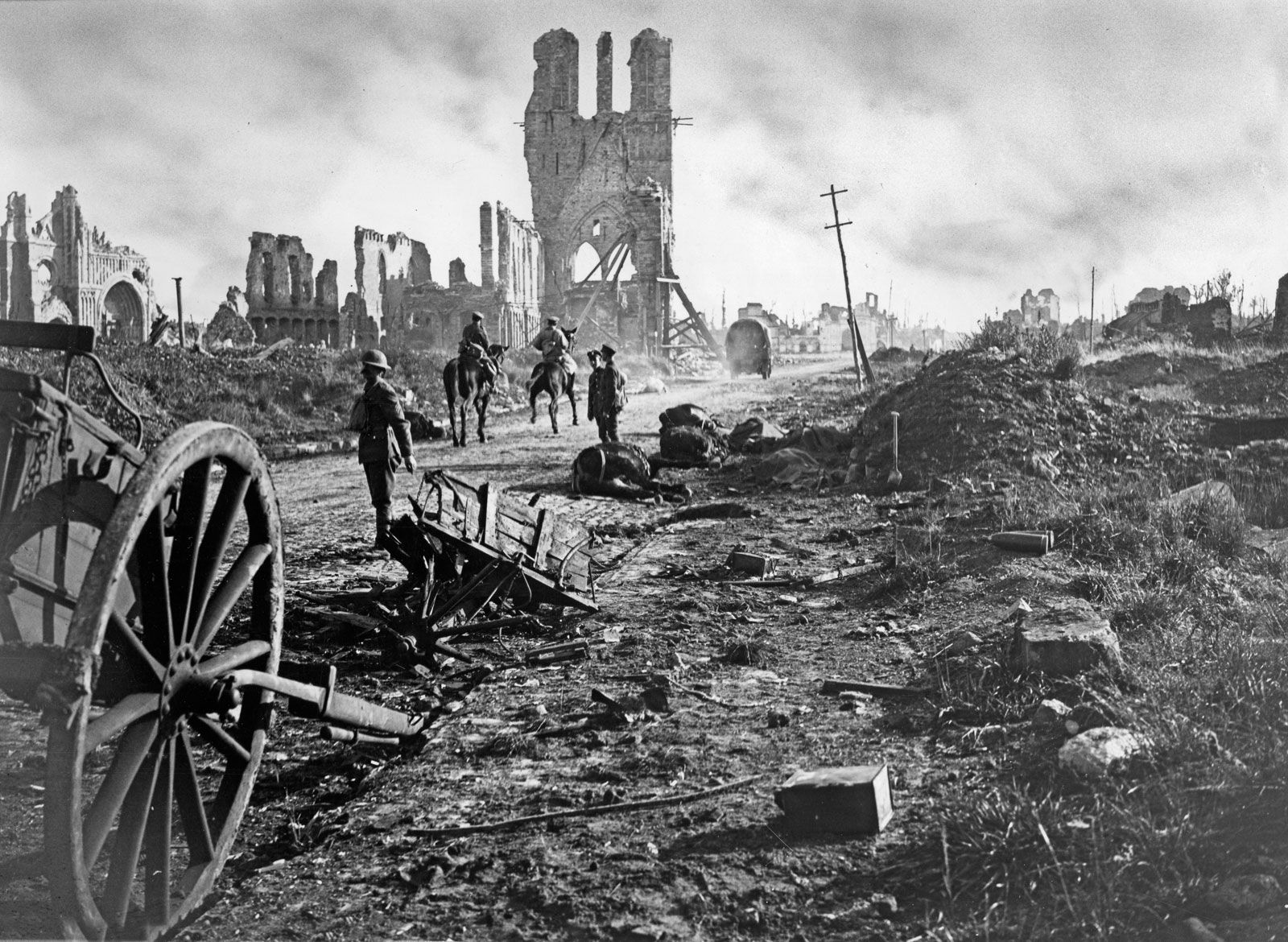
 www.britannica.com
www.britannica.com
On July 31, 1917, the Allies launch a renewed assault on German lines in the Flanders region of Belgium, in the much-contested region near Ypres, during World War I. The attack begins more than three months of brutal fighting, known as the Third Battle of Ypres.
While the first and second battles at Ypres were attacks by the Germans against the Allied-controlled salient around Ypres—which crucially blocked any German advance to the English Channel—the third was spearheaded by the British commander in chief, Sir Douglas Haig. After the resounding failure of the Nivelle Offensive–named for its mastermind, the French commander Robert Nivelle–the previous May, followed by widespread mutinies within the French army, Haig insisted that the British should press ahead with another major offensive that summer. The aggressive and meticulously planned offensive, ostensibly aimed at destroying German submarine bases located on the north coast of Belgium, was in fact driven by Haig’s (mistaken) belief that the German army was on the verge of collapse, and would be broken completely by a major Allied victory.
After an opening barrage of some 3,000 guns and some 4.5 million shells (It is estimated,that as much as 30% of WWI ordnance failed to explode. Areas of France are still off limits due to UXO, ERW. See "Zone Rouge" bb) Haig ordered nine British divisions, led by Sir Hubert Gough’s 5th Army, to advance on the German lines near the Belgian village of Passchendaele on July 31; they were joined by six French divisions. In the first two days of the attacks, while suffering heavy casualties, the Allies made significant advances—in some sectors pushing the Germans back more than a mile and taking more than 5,000 German prisoners—if not as significant as Haig had envisioned. The offensive was renewed in mid-August, though heavy rains and thickening mud severely hampered the effectiveness of Allied infantry and artillery and prevented substantial gains over the majority of the summer and early fall.
Dissatisfied with his army’s gains by the end of August, Haig had replaced Gough with Herbert Plumer at the head of the attack; after several small gains in September, the British were able to establish control over the ridge of land east of Ypres. Encouraged, Haig pushed Plumer to continue the attacks towards the Passchendaele ridge, some 10 kilometers from Ypres.
Thus the Third Battle of Ypres–also known as Passchendaele, for the village, and the ridge surrounding it, that saw the heaviest fighting–continued into its third month, as the Allied attackers reached near-exhaustion, with few notable gains, and the Germans reinforced their positions in the region with reserve troops released from the Eastern Front, where Russia’s army was foundering amid internal turmoil. Unwilling to give up, Haig ordered a final three attacks on Passchendaele in late October. The eventual capture of the village, by Canadian and British troops, on November 6, 1917, allowed Haig to finally call off the offensive, claiming victory, despite some 310,000 British casualties, as opposed to 260,000 on the German side, and a failure to create any substantial breakthrough, or change of momentum, on the Western Front. Given its outcome, the Third Battle of Ypres remains one of the most costly and controversial offensives of World War I, representing–at least for the British–the epitome of the wasteful and futile nature of trench warfare. In 1918 all the ground that had been gained there by the Allies was evacuated in the face of a looming German assault. Passchendaele would be remembered as a symbol of the worst horrors of the First World War, the sheer futility of much of the fighting, and the reckless disregard by some of the war’s senior leaders for the lives of the men under their command.
Some 61 Victoria Crosses, the British Empire’s highest decoration for military valour, were awarded after the fighting. More Victoria Crosses—14 in total—were awarded for actions on the opening day of the Battle of Passchendaele than for actions on any other single day of combat in World War I.

Battle of Passchendaele | Facts, Maps, Summary, & Casualties
Battle of Passchendaele (July 31–November 6, 1917), World War I battle that embodied the senseless slaughter of the Western Front. Passchendaele was the third and longest battle to take place at Ypres, Belgium. The Allied victory was achieved at enormous cost for a piece of ground that would be...
BarnBuster
Virtually Unknown Member
On August 1, 1943, 177 B-24 bombers take off from an Allied base in Libya, bound for the oil-producing city Ploiești, Romania, nicknamed “Hitler’s gas station.”
Operation Tidal Wave began ominously, with an overloaded bomber crashing shortly after takeoff and another plunging into the Adriatic Sea. 167 of the original 177 bombers made it to Ploiești, whose oil fields and refineries provided the Germans with over 8.5 million tons of oil per year. Whereas most Allied bombing in World War II was carried out from a high altitude, the bombers that raided Ploiești flew exceptionally low in order to evade the Germans’ radar. The bombers lost the element of surprise, however, when one group veered off on the wrong direction, forcing the others to break radio silence in order to direct them back on course. This unplanned adjustment also led to the bombers approaching from the south, where the Nazis had concentrated their anti-aircraft batteries.
The ensuing attack was dramatic, chaotic and costly. The Allies suffered heavy casualties, and smoke from the explosions caused by the first wave of bombers made visibility difficult for subsequent waves. Survivors reported debris like branches and barbed wire hitting and even ending up on the inside of their planes. Lt. Col. Addison Baker and Maj. John Jerstad were awarded the Medal of Honor for their (unsuccessful) attempt to fly higher and allow the crew to bail of our their badly damaged plane. Another pilot, Lt. Lloyd Herbert Hughes, also received a posthumous Medal of Honor for flying his critically-damaged B-24 into its target. Col. John Kane and Col. Leon Johnson, who each led bombing groups that reached their targets, were the only men who won the Medal of Honor and survived the raid.
Although the Allies estimated that the raid had reduced Ploiești’s capacity by 40 percent, the damage was quickly repaired and within months the refineries had outstripped their previous capacity. The region continued to serve as “Hitler’s gas station” until the Soviet Union captured it in August of 1944. 310 airmen died, 108 were captured and another 78 were interned in neighboring Turkey.
Operation Tidal Wave is largely considered a failure from the American perspective for this reason. However, there is some argument that can be made that this delay in production, even if only brief, was a victory for the Allies. It allowed the Red Army to take advantage of the lack of fuel for the panzers and launch two offensives at Smolensk and Dnieper, which helped liberate those previously German controlled areas.
Of the 178 planes that took off from Benghazi, only 89 returned. While the enemy destroyed 54 planes, others crash landed at bases throughout the area. Over 300 men died, over 100 captured, and 78 were interred in Turkey. Of the 89 returning planes, over a third were unfit to fly afterward. .
Operation Tidal Wave remains the most highly decorated military mission in U.S. History. Five Medals of Honor, 3 posthumously, were awarded, the most for any single air mission in history. 998 enlisted aircrew flew in Tidal Wave. 900 were decorated. 10 Silver Stars, 16 Distinguished Service Crosses and 879 Distinguished Flying Crosses were awarded to bombadiers, gunners, engineers and radioman for their heroics.
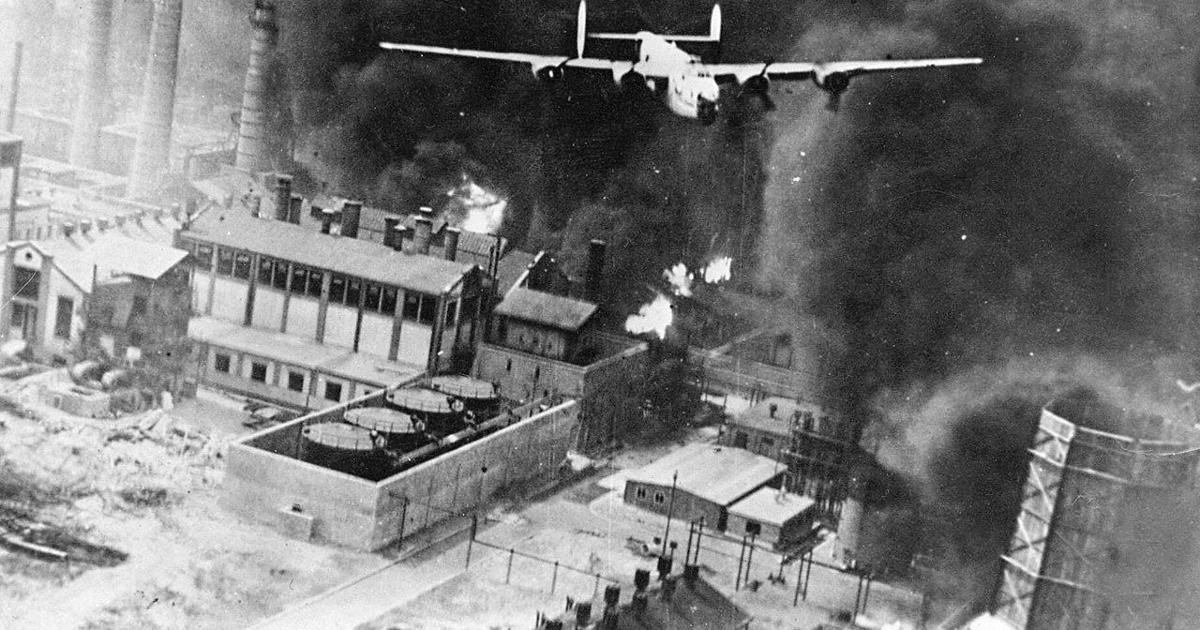
A U.S. raid on 'Hitler's Gas Station' killed 310 airmen. Offutt is working to ID some of the fallen
The war planners called it Operation Tidal Wave. Today, it is considered by many historians the most spectacular air raid of the war: dozens of bombers flying hundreds of miles
raratt
Well-Known Member
Sixty-Five Years Ago, Aug 1st 1955, The U-2 Made its First Flight
On August 1, 1955, a prototype of the U-2 spy plane sped down a runway at Groom Lake in Nevada (you may know it as Area 51), and its massive wings quickly lifted it into the sky. But that wasn't exactly how it was supposed to go.










